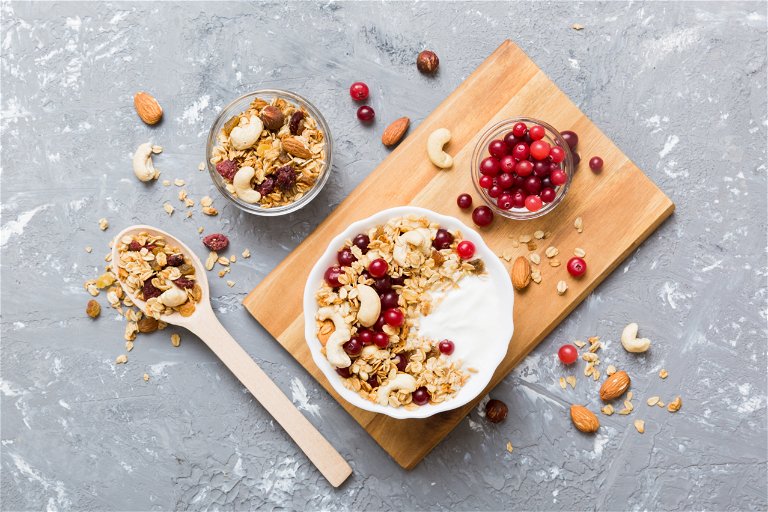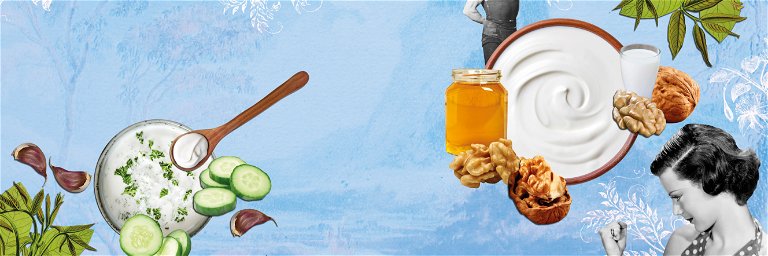The Greek Yogurt Guide: Explore Four Outstanding Creations
Renowned for its creamy texture and mild flavour, Greek yogurt is not just a protein-rich delight—it's capturing hearts worldwide. What sets it apart from regular yogurt, and can it really boost muscle growth? Find out now.
Like many trends, this one is also coming back to Europe via the US: Greek yoghurt has made yoghurt "socially acceptable" there and given the segment an enormous boost. In contrast to the conventional version, it appeals equally to women and men across the generations, also sports enthusiasts, those who want to lose weight and those with an affinity for pleasure. The Boomers are the ones who are gobbling up the most, but only by a small margin.
The American yoghurt market is estimated to be worth over seven billion US dollars. Every second yoghurt sold in the USA is now "Greek", compared to just one percent in 2007. We are also following suit in Europe, and annual growth of seven percent is expected worldwide in the coming years.
Creamy yoghurt is gaining traction thanks to its high protein content, awareness of intestinal health and changing preferences, such as the strong demand for "clean labels". This refers to the desire for an understandable, transparent and usually short list of ingredients – without additives such as flavour enhancers, colourants, sweeteners or acidifiers, emulsifiers and preservatives. Natural yoghurt scores highly here. This is because it requires nothing but milk and yoghurt cultures as raw materials. And Greek yoghurt scores even more points because its special production method gives it a consistency that is reminiscent of dessert. So how does it differ from the conventional one?

Fermented milk
Yoghurt is one of the oldest fermented milk products. It is produced by the work of special lactic acid bacteria such as Lactobacillus acidophilus, Lactobacillus bulgaricus, Streptococcus thermophilus and bifidobacteria. Together they make up the yoghurt culture, which occurs naturally in milk but is also added. Depending on the ratio of bacterial strains to each other, a different taste develops. In order to multiply, the lactic acid bacteria need a pleasant environment of between 35 and 45 degrees Celsius.
In the first few hours, they then convert the lactose into lactic acid. The lactic acid coagulates the protein and forms a firm consistency. In technical jargon, this is called thickening. It also produces the typical sour notes. The conversion of lactose to lactic acid also means that people with lactose intolerance have a poor tolerance to milk, but can often eat a pot of yoghurt without any problems. And the probiotic bacteria are also responsible for the positive influence on the intestinal flora.
Raw material intensive
Greek yoghurt, like Turkish yoghurt, is drained for longer after curdling. Traditionally, the intensive separation of the whey using linen cloths, a filtration process is used on a large scale. This process results in a yoghurt with a thicker and creamier consistency. The removal of whey is also associated with a higher use of raw materials.
While around one litre of milk is needed for one kilogram of normal yoghurt, around four litres of milk are required for one kilogram of Greek yoghurt due to the longer draining time. If the yoghurt is not produced in Greece but is made in the same way, it may only be marketed in the EU as "Greek-style yoghurt".

Traditionally in Greece, sheep's milk was used as the base product. This is still often the case there today, if only because sheep's milk has a higher fat and protein content and contains less water. This results in a higher yield and a firmer consistency. However, we mainly have Greek yoghurt (or Greek-style yoghurt) made from cow's milk on the shelves.
Concentration also leads to a protein content that is twice as high as in normal yoghurt. The Greek version contains around nine grams of protein per 100 grams. This appeals to many people who exercise regularly. Although it is a myth that an extra portion of protein automatically leads to more muscle growth, muscles contain protein and more muscle mass needs more protein. People over the age of 60 also need more protein. And those who give up meat but consume dairy products can also enjoy the Greek variant for a nutritional boost. What's more, protein fills you up well and for a long time. It can therefore also help to maintain or lose weight.
Greek yoghurt is firm and creamy in consistency. Compared to conventional yoghurt, the whey in the Greek version drains for longer, which also increases the fat and protein content. Muscle growth only occurs in combination with targeted training.
Slim line
However, there are several other possible mechanisms for the weight-friendly effect of yoghurt - regardless of whether it is normal or Greek - such as the contribution to a more favourable composition of the intestinal flora, which is demonstrably different in normal and overweight people. Or the branched-chain amino acids and whey proteins that counteract fat storage. The lactic acid also ensures better calcium absorption, which is also associated with increased fat loss and stronger bones.
RECIPE IDEAS WITH GREEK YOGURT
- Zucchini donuts with yogurt sauce
- Greek yogurt espuma
- Eggplant shakshuka with sesame yogurt
- Mango and passion fruit eton mess with Greek yogurt
Don't miss out!
Sign up now for our newsletter












